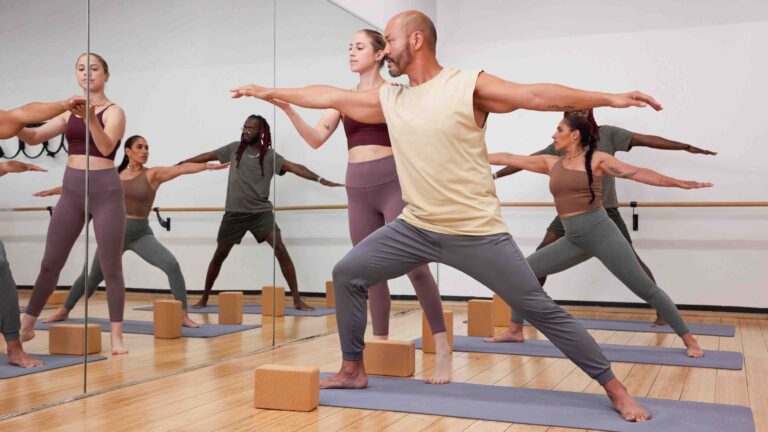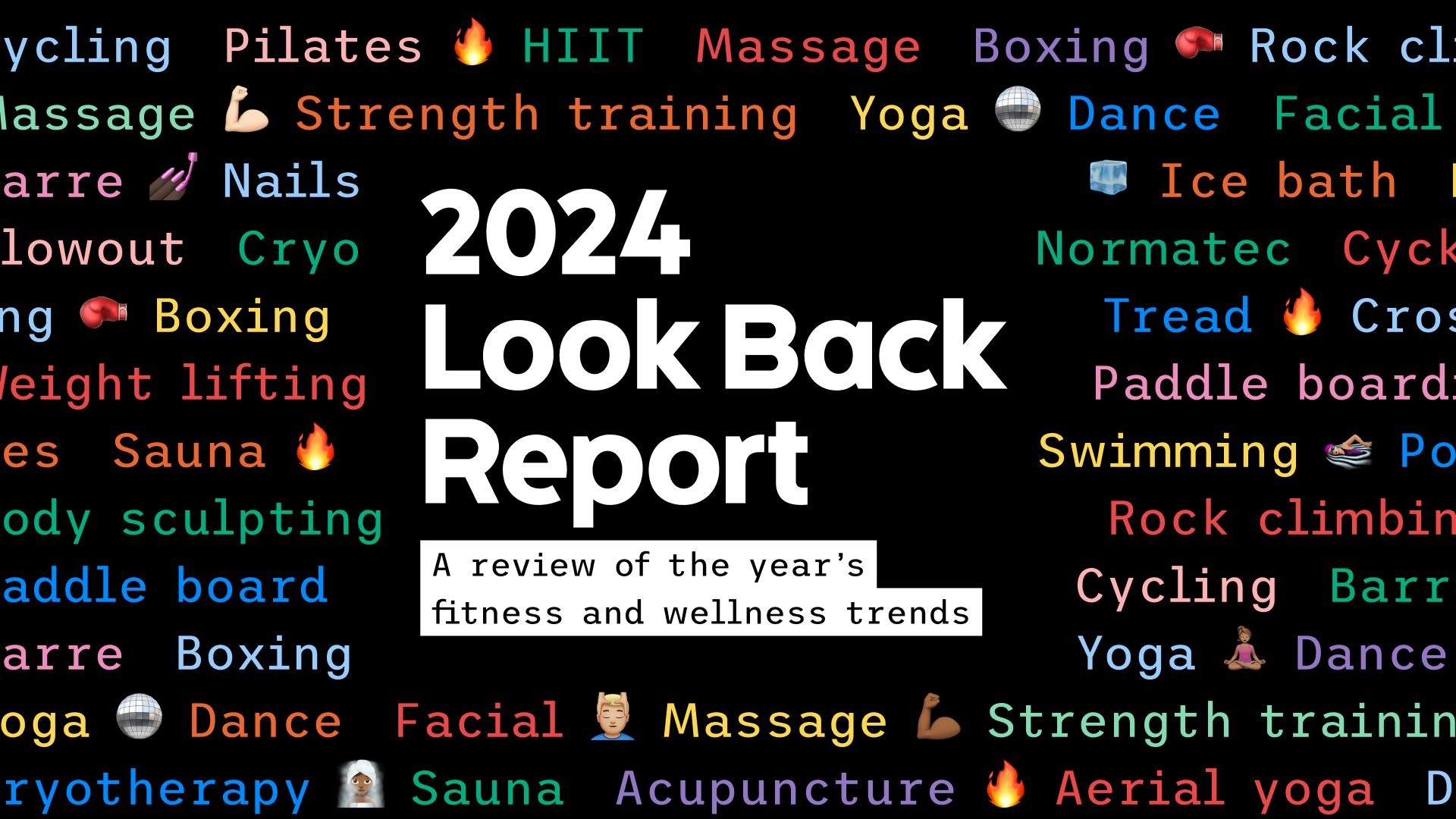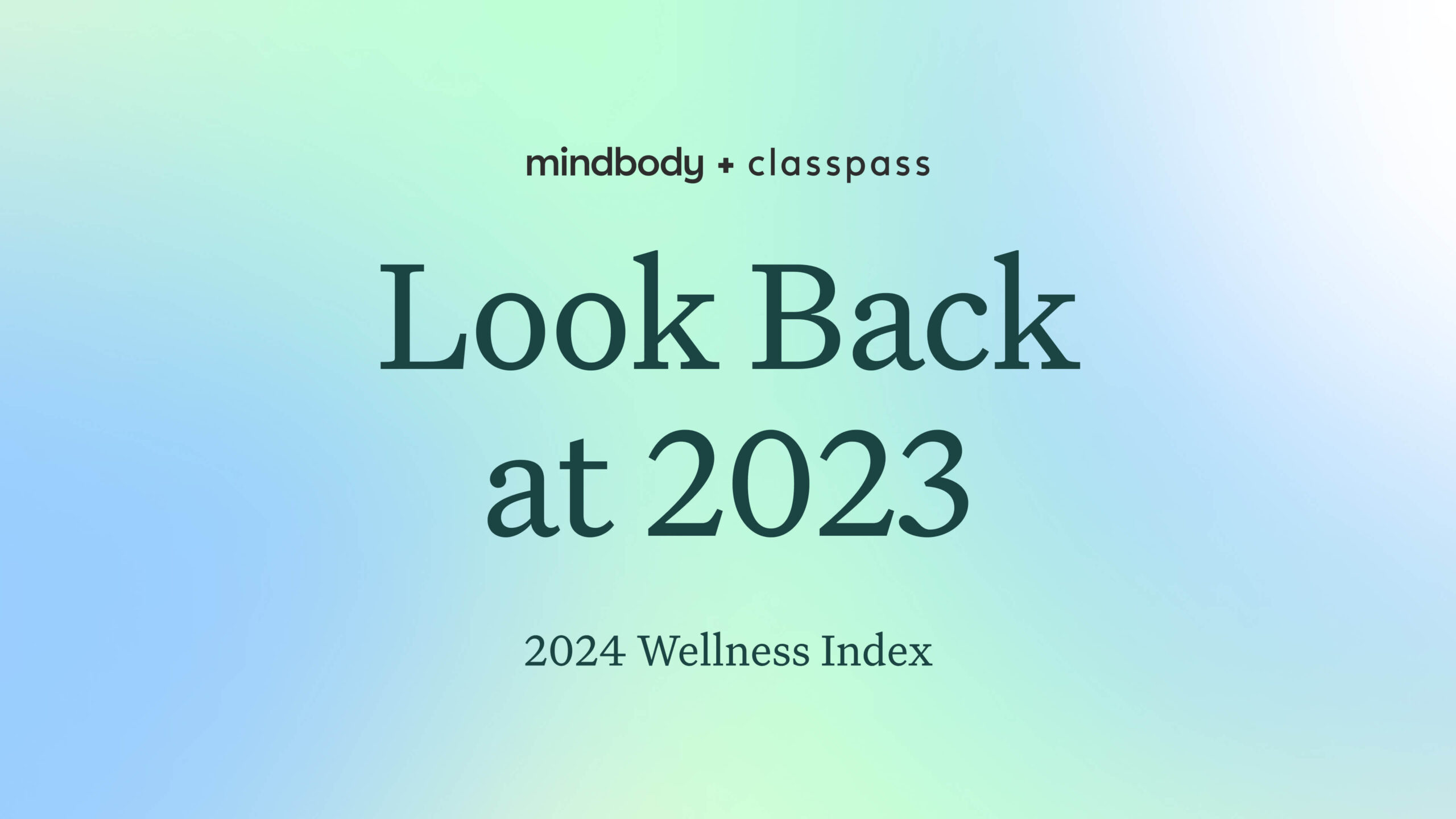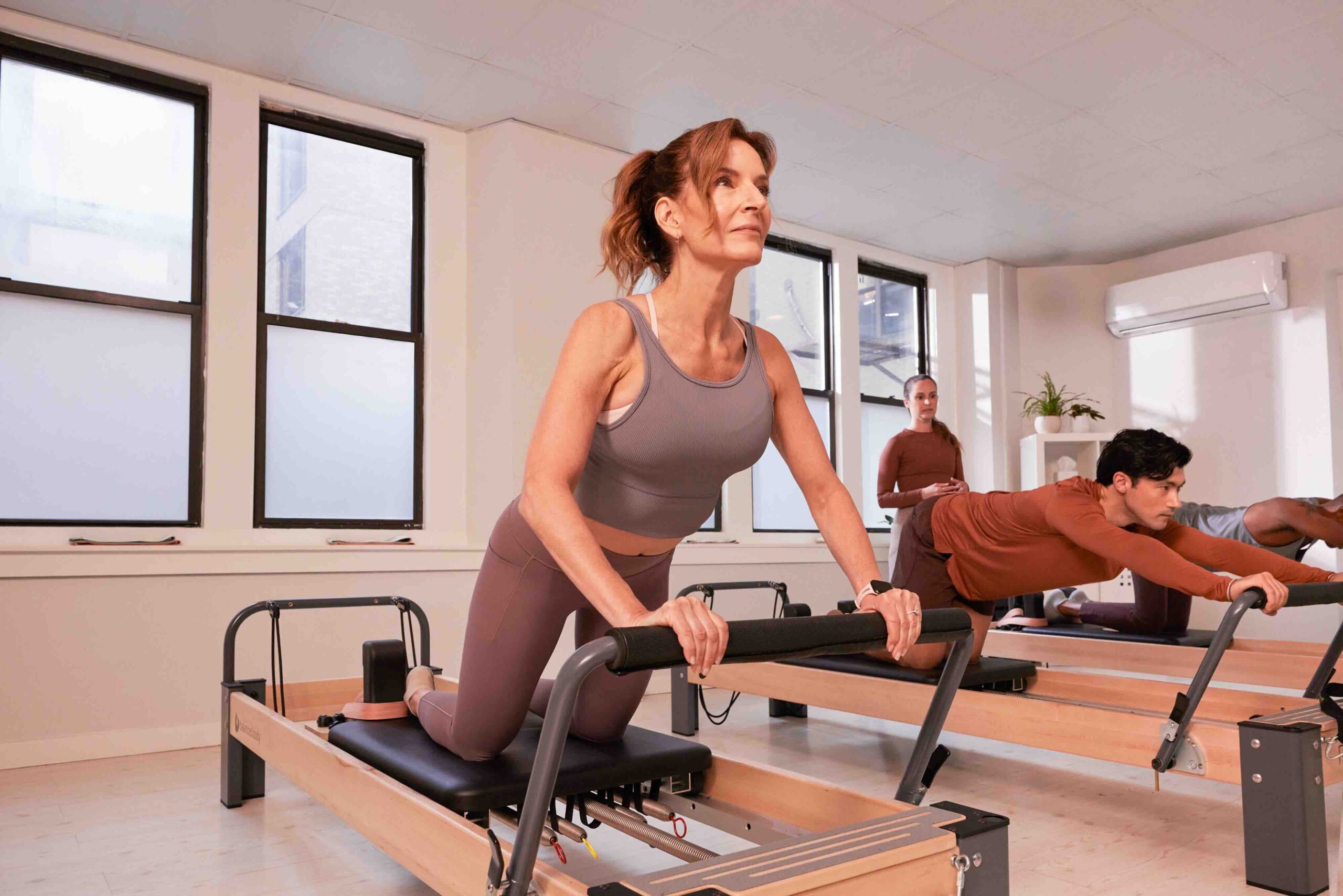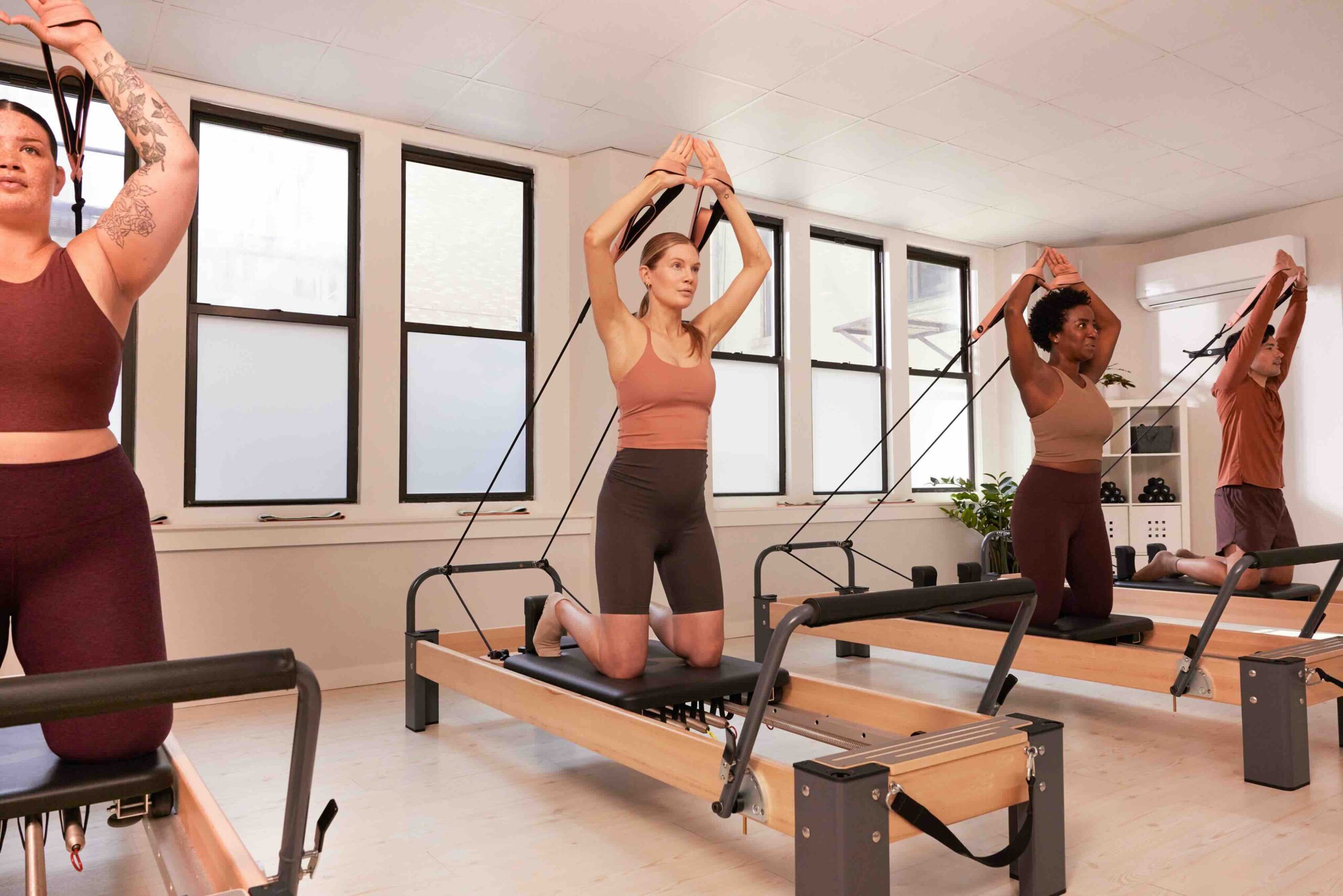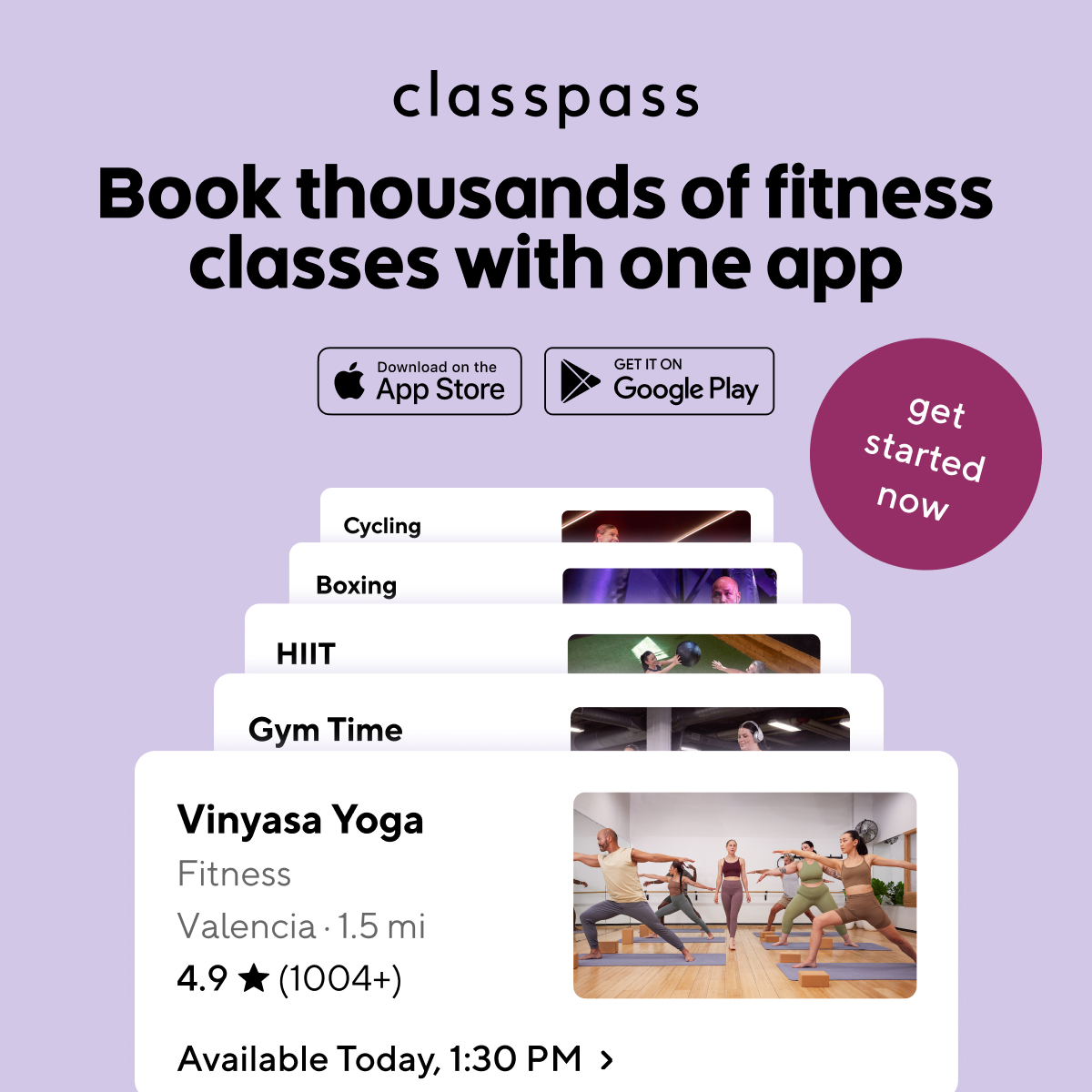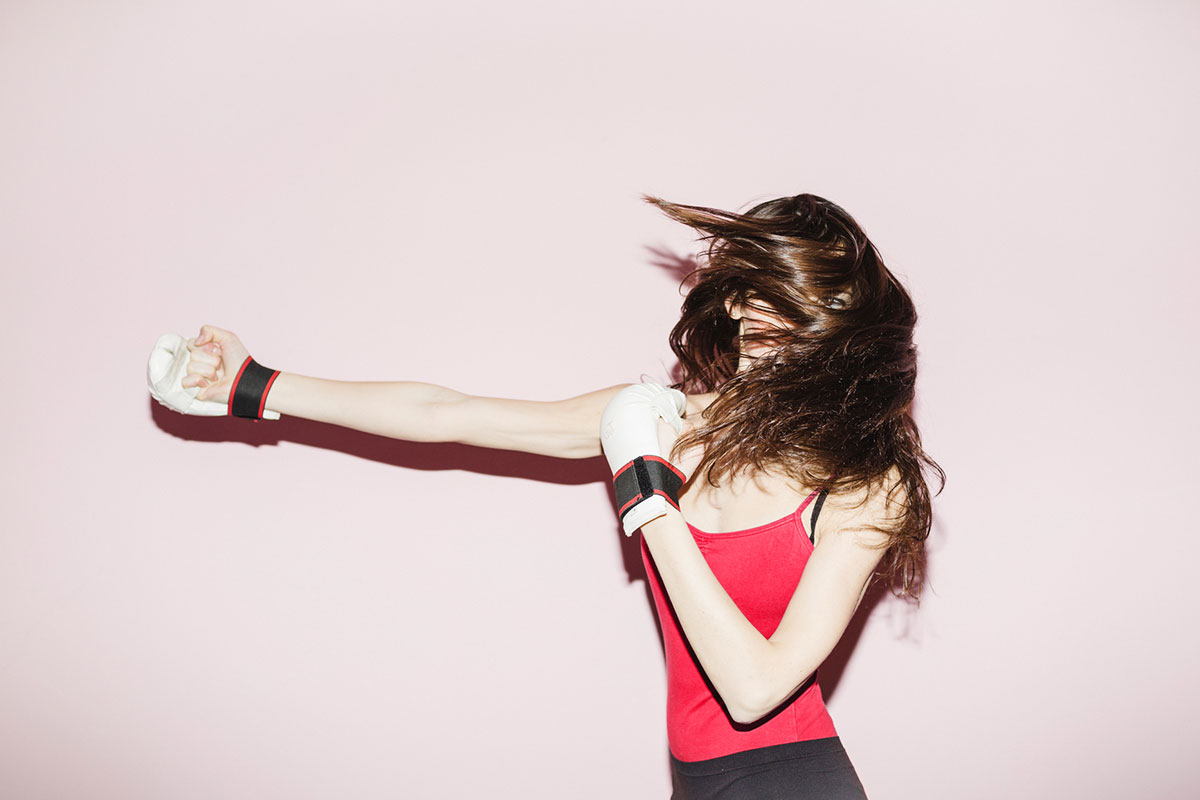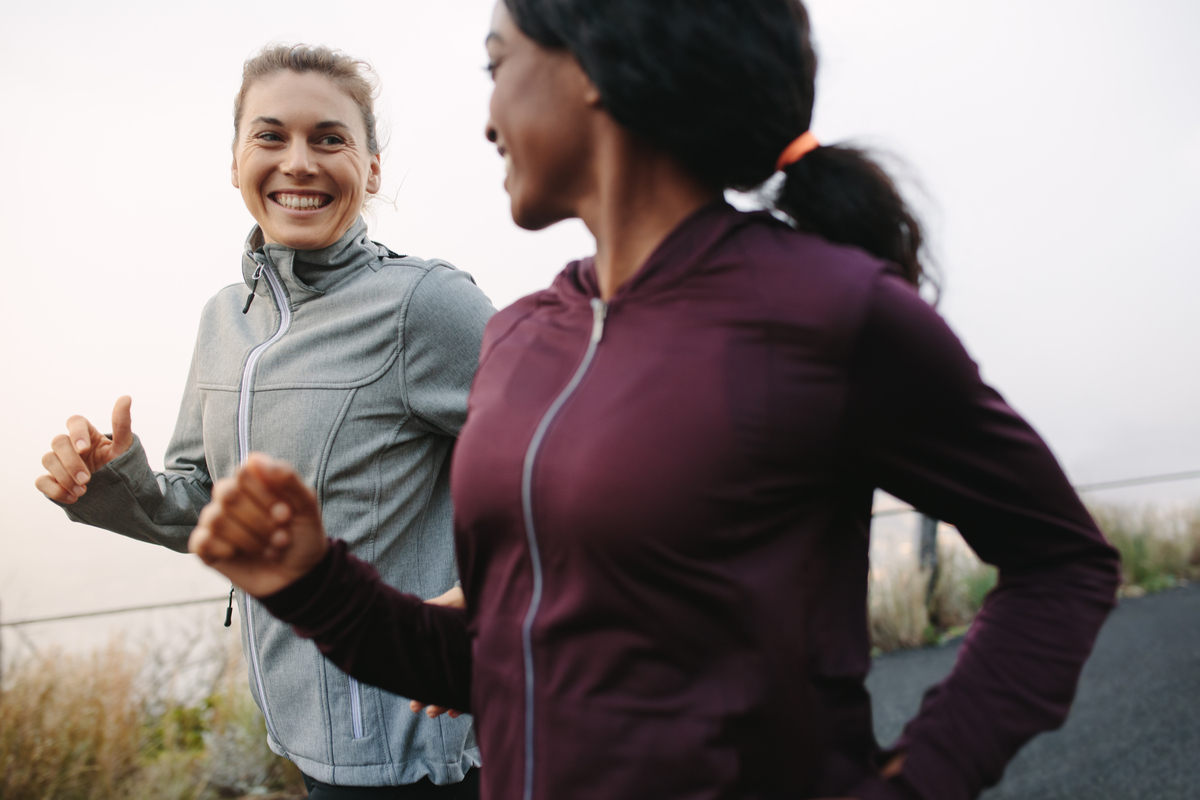Stubborn. Unyielding. Rigid. Not words we want to use to describe our bodies.
Thanks to sedentary jobs, the natural aging process or a general lack of time, most of us are not as flexible as we’d like to be. Don’t shrug your tight shoulders and try to accept this stiffness as a part of life! We recommend setting aside some time in your daily or weekly routine to combat the rigidity and start working towards new levels of limber.
As with any aspect of physical fitness, the “use it or lose it” rule is relevant for flexibility. A dedicated practice improves your range of motion and maintains strength and flexibility for decades to come. One of our favorite ways to stay bendy? Yoga for flexibility!
Yoga is a fantastic way to increase joint and muscle mobility without putting too much strain on your body. No matter your abilities, learning more about this practice and exploring the yoga studios in your area can empower you to dedicate some attention to stretching your body.
So roll your shoulders back, take a cleansing breath and let’s chat yoga for flexibility!
Yoga stretches for flexibility
One reason people avoid yoga is that they think they are not flexible enough to get anything out of the practice. And to those people, we say – all the more reason to try it!
Have you ever seen a seasoned yogi twist themselves into a pretzel? That may look unattainable and it’s easy to write them off saying “they were born with that flexibility.” But even the experts were once beginners that worked diligently to gain the flexibility they have.
We all need to start somewhere. By starting with simple stretches and poses, you can limber up your body and help it better execute fitness activities and daily life.
Why is flexibility so important?
Flexibility is one of those sneaky aspects of fitness that impacts so much of daily life, from bending over to tie your shoes to sitting cross-legged on the ground to chasing kids around the playground. Seemingly simple tasks – but when you’re feeling tight, you notice the difference.
You will move better. Stretching is like a body tune-up. The more attention you put into the work, the better and longer you’ll run. From an increased range of motion to more confidence taking on rigorous movement, a flexible body will rise to the challenge.
It can give your body relief from pain. Rigid and stiff muscles pull on joints and ligaments and can cause serious discomfort. The more flexible and elongated your muscles are, the more they can do comfortably and pain-free.
Flexibility can protect your body from injury. When you put a strain on something that can’t bend, it breaks. Ouch. The more attention you give to your flexibility, the more strain your muscles, joints and ligaments can take.
Increasing your flexibility will help your body feel younger. The best thing you can do to avoid saying “I feel 20 years older than I am” is with frequent, consistent stretching. Not only is it possible to feel your age, but you can also continue until you feel like a kid again.
It can help you let go of both physical and mental tension. We’ve all experienced how stress can impact our body – from stiff shoulders to a sore neck. It works both ways. If you concentrate on reducing the stiffness in your body, it can help you unlock some flexibility in your mind too.
Flexibility improves circulation. If you look into the history of yoga, you’ll see how yoga was born from the idea of supporting the flow of energy through the body. That belief stands strong today, as increased flexibility supports blood flow to help with muscle recovery and avoid stiffness.
How does yoga impact flexibility?
There are tons of reasons to start a regular yoga practice. Yoga is a gentle way to tone muscles. It can help you combat anxiety. And famously, it does wonders for flexibility.
Tight hips, shoulders, necks, hamstrings and calves will all but send you a thank you card for the attention and lengthening they receive during a yoga practice.
How is yoga different from stretching?
Stretching is great for improving flexibility, but it’s not the same as practicing yoga for flexibility.
To differentiate the two, consider stretching the physical movement of bending your body. Yoga for flexibility connects your conscious mind to your stretching practice.
Yoga for flexibility focuses on the three A’s: alignment, attention and awareness. Connecting this conscious practice to your stretching routine does several things.
- It adds consciousness to the order and flow of positions you take. Each posture should prepare and protect your body for the next pose, like unlocking a new level.
- Leveraging the structure of yoga helps you find the line of discomfort in a pose without crossing it.
- Yoga for flexibility puts a focus on correct posture and technique to maximize benefits and minimize the chance of overstrain.
- Yoga connects mind and body, so releasing physical strain will help you release mental so you get the strain as well.
- Practicing yoga helps you time how long you are active the stretching postures which maximizes the benefits of the stretch.
- Usually, when you plan a little stretch session, 5-10 minutes feels like enough. With yoga for flexibility, you stay grounded for a longer amount of time – you can easily dedicate 45 minutes to an hour for your practice!
Which type of yoga is best for flexibility?
Here’s the great news – there isn’t a wrong choice when it comes to improving your flexibility through yoga! Every style of yoga can offer great opportunities to get limber. The most important part of choosing your practice is understanding what your body can accomplish safely and comfortably. Here are a couple of our favorites:
Vinyasa yoga is great for multitaskers who want to improve flexibility while toning their muscles. You flow through faster-paced, muscle-engaging poses. Yogis of all abilities can use vinyasa yoga to get stronger and more limber.
Yin yoga is a great place to start if you are at square one in your journey to flexibility. Yin yoga focuses on holding gentle, simple poses for a long amount of time so your body can ease into the stretch.
How often to do yoga to increase flexibility
The short answer? It depends.
Incorporating yoga for flexibility into your daily routine is the best way to see dramatic results, but any amount of consistent work on flexibility will have great benefits.
Many people even see a difference comparing their flexibility from the beginning of a yoga class to the end! A pose that was initially clunky and uncomfortable can feel flowy and soothing by the end of the practice.
Going to regular yoga classes in your area is a great way to learn new poses for flexibility, focus on your goals and meet new people in your community doing the same. But knowing a few simple poses and spending 10 minutes in the morning or evening on yoga for flexibility is also a good habit to develop.
These are the best yoga poses for flexibility
Want to jump into getting limber with yoga? You can chat with your yoga instructor about targeting specific body parts during your next practice or try these yoga poses for flexibility at home.
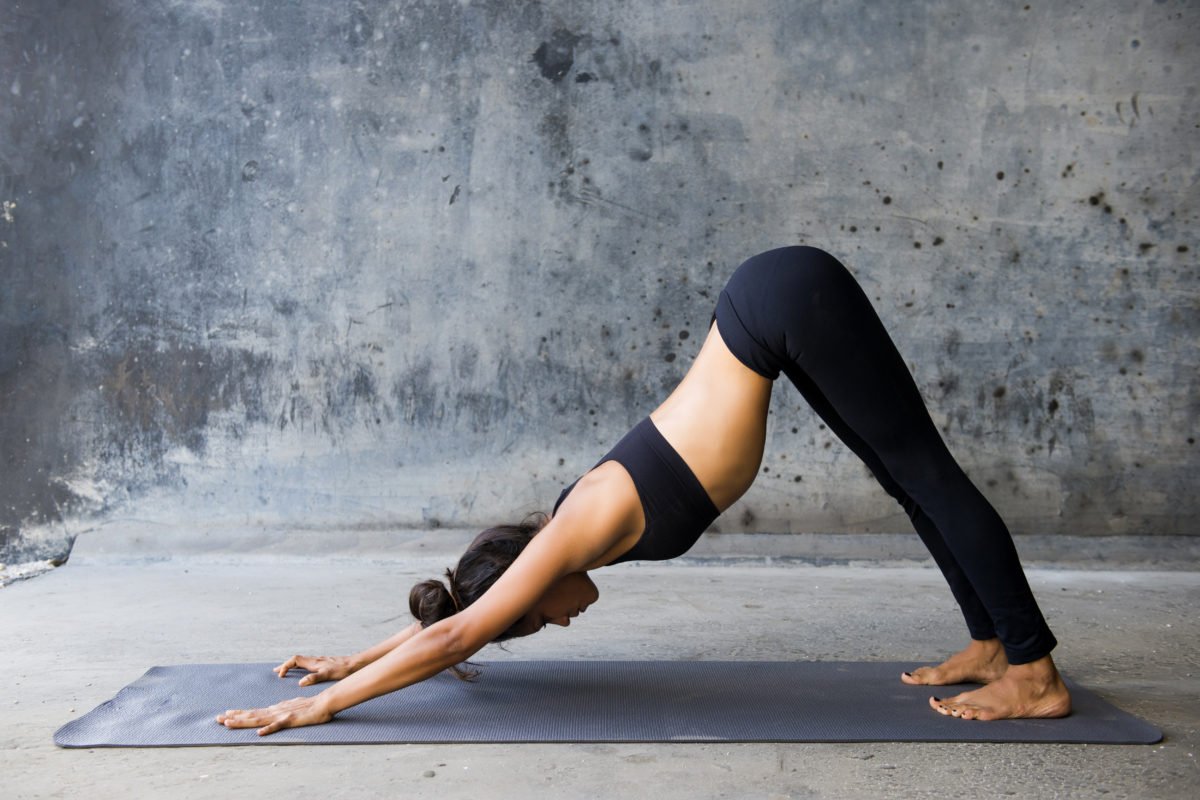
For your legs: Downward-Facing Dog
This is the meat-and-potatoes of yoga poses for a great reason. Downward-facing dog is a great stretch for the back of your body, from the lower back to hamstrings to calves. It is also a great shoulder warm-up!
How to do this pose:
- Start on your hands and knees in a neutral position (perhaps cycle through some cat-cow poses to prepare).
- Align your hands under your shoulders, engage your core, press your weight into your hands.
- Tuck your toes and lift off your knees onto your feet.
- Now that you’re in the basic position, make it your own! Rock your legs, shift your hips, pedal your feet – whatever helps you relax into the position.
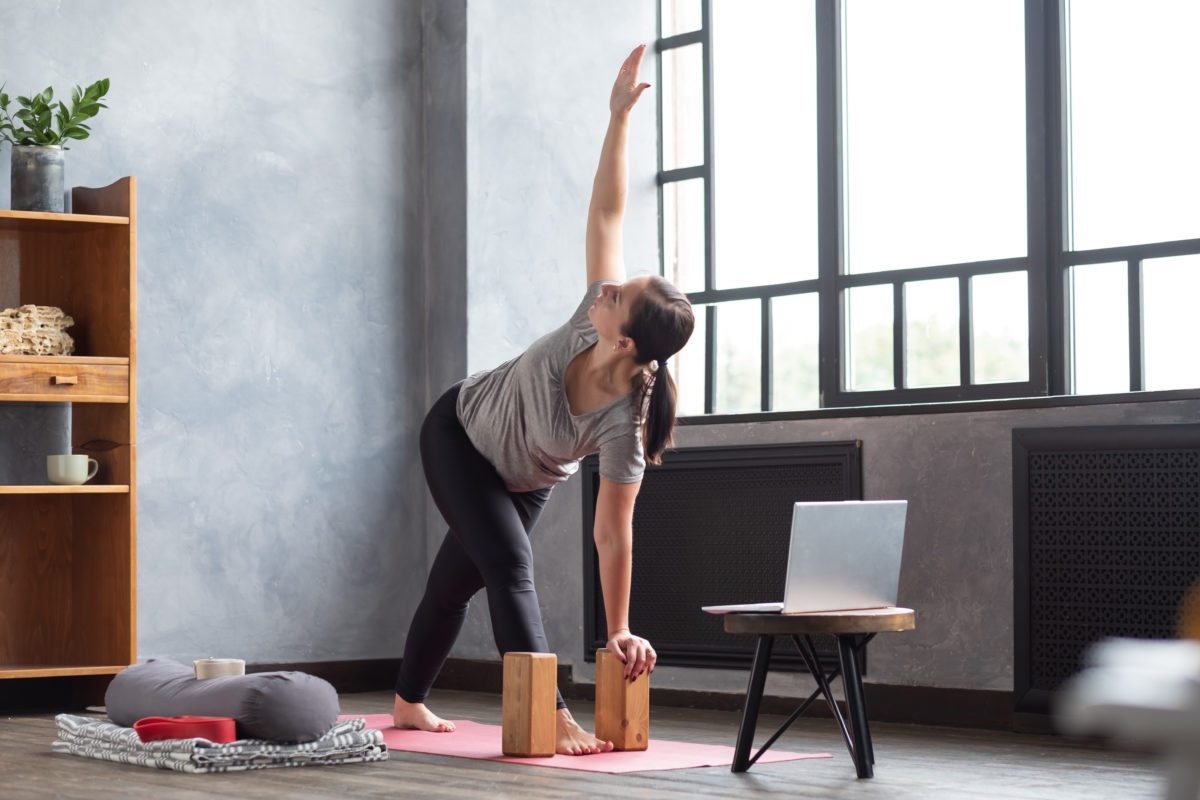
For your hips: Triangle Pose
Once you’re warm, taking a triangle pose is a great way to loosen your hips, thighs and back. It is also beneficial for strengthening your core muscles.
- Begin in Warrior II pose.
- Shorten the distance between your legs a bit and straighten your legs.
- Reach your fingers forward as far as they can go before eventually tipping down with a straight back.
- Meet your fingers to your shin, foot or the floor.
- Stack your shoulders, so the opposite fingers are reaching toward the sky.
- You have the choice to gaze toward your top or bottom hand – whichever is comfortable.
- Hold for about a minute and repeat on the other side.
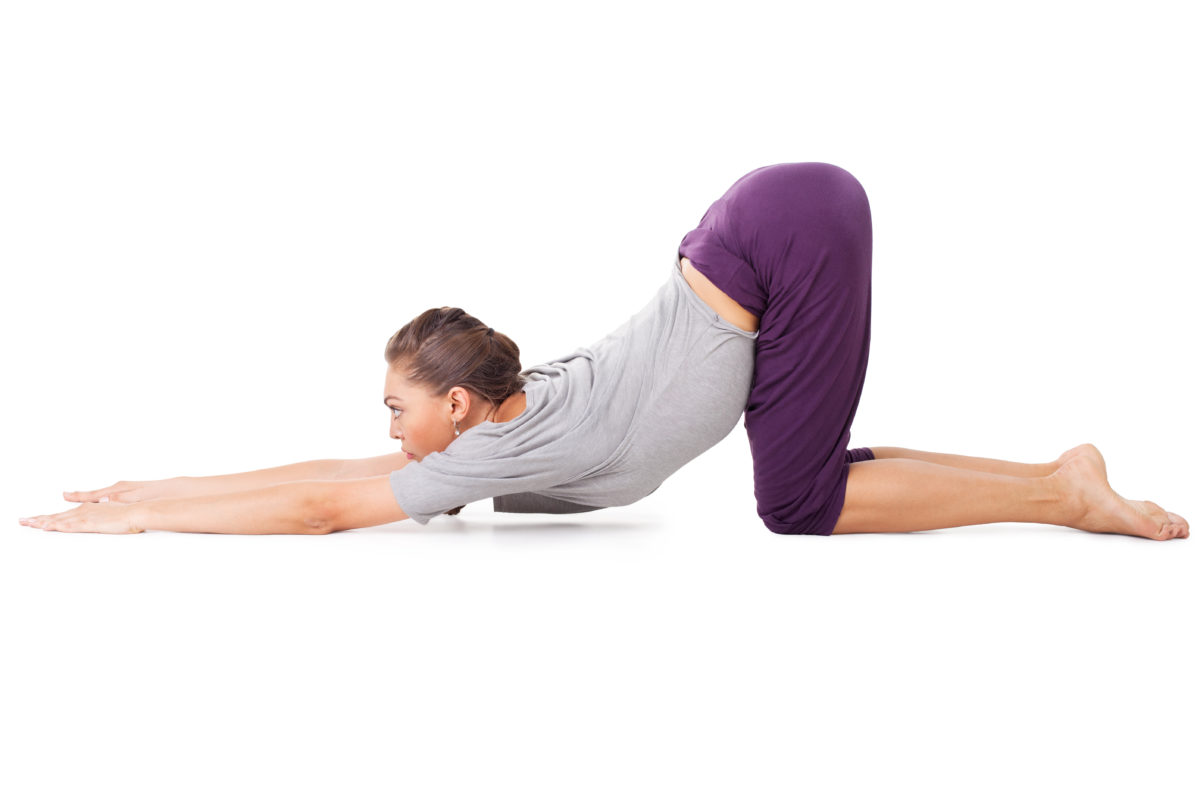
For your shoulders: Puppy Pose
Picture a puppy just waking up from a long nap, getting ready to play again! This pose is a lovely chest-opener for those who feel tight in their shoulders and neck. It’s wonderful after a long day of sitting at a desk and can be as intense or gentle as you like.
- Start on your hands and knees in a neutral position (perhaps cycle through some cat-cow poses to prepare).
- Keeping your hips high in the air, slowly walk your hands forward, paying extra attention to how your shoulders feel.
- Reach your arms forward as far as comfortable and rest your head on the mat.
- Pay attention to your breathing and hold for about one minute.
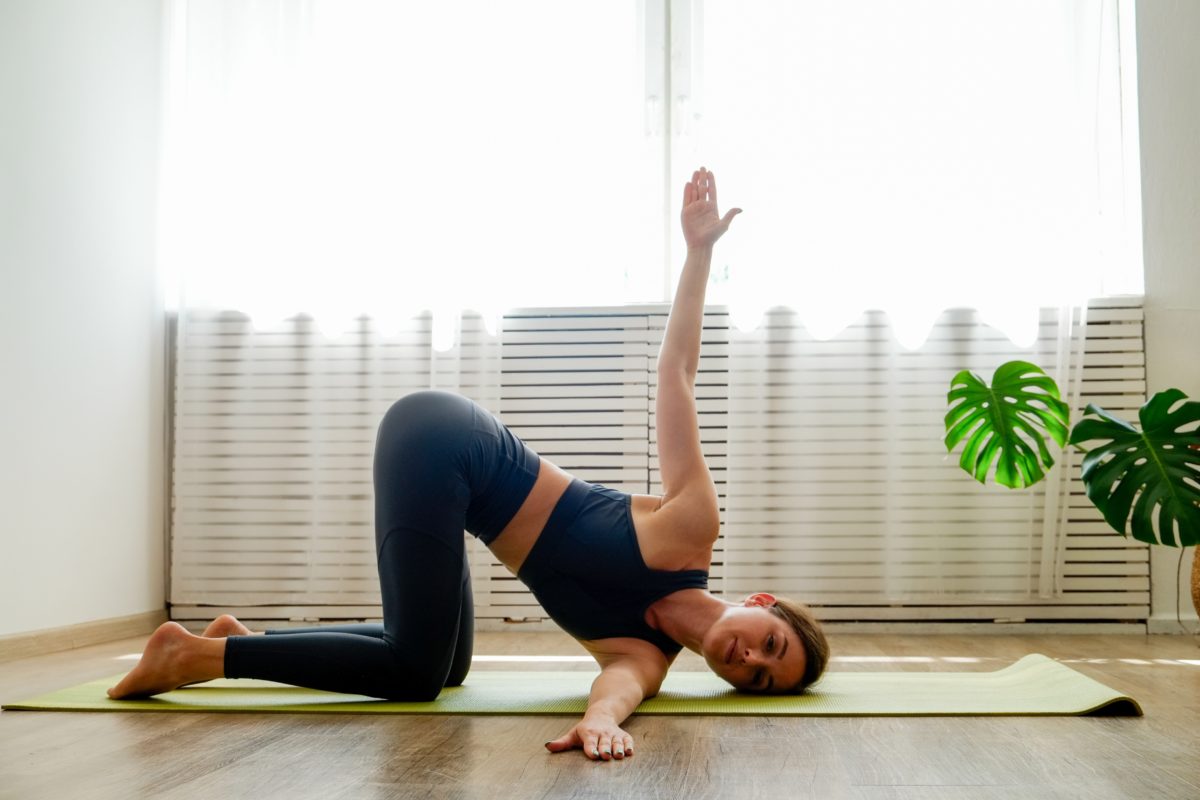
For your upper back: Thread the Needle
This pose targets a famously difficult area of the body to stretch – the upper back. Take this pose to experience a sigh of relief and release.
- Start on your hands and knees (or tabletop).
- Extend one arm upward for a breath (already an amazing stretch).
- “Thread” it under the armpit of the arm on the ground and extend along the ground as far as comfortable.
- Keep the palm facing upward and your hips should stay aligned (try to keep your weight evenly dispersed between your knees).
- You can deepen the position by adding a bind (placing the other arm behind your back).
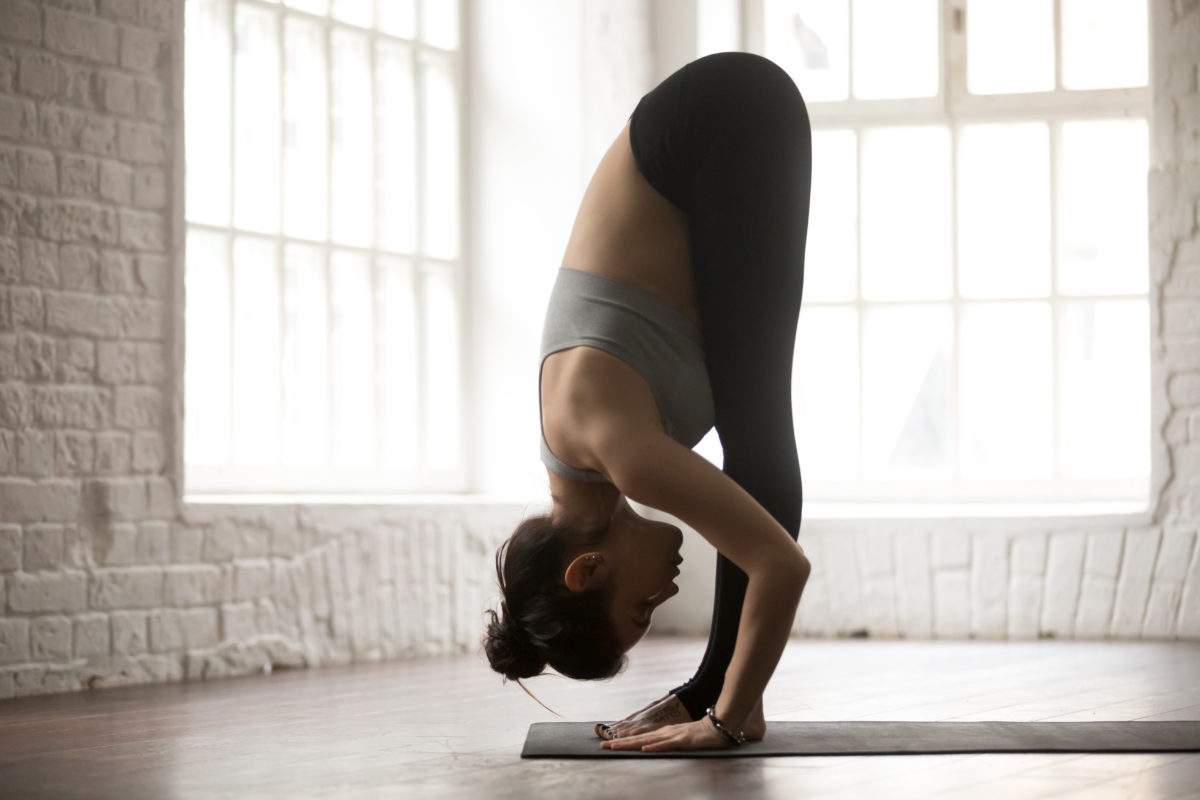
For your lower back: Forward Standing Bend
Taking this gentle standing pose is a great way to lengthen the vertebrae in your back and give your lower body a much-needed stretch. This pose can feel intense on stiffer bodies, so modifying to your comfort is key to a wonderful stretch!
- Start in downward-facing dog.
- Slowly step forward towards your hands with your feet ending shoulder-width apart.
- Straighten your legs to your comfort level (most people will keep a gentle bend in their knees)
- Focus on keeping your upper body relaxed. Slowly nod and shake your head to release your neck muscles. Slowly sway from side to side using your core. You can keep your arms hanging, grab your toes or bind your arms at the elbows.
How long do you have to do yoga to become flexible?
Since there is no true ceiling on your level of flexibility, finding your most-limber body is a life-long journey!
Feeling noticeable results in your daily life comes at different times for different people. From how often you practice yoga to your current activity levels to any preexisting conditions, quite a few variables are impacting your flexibility journey. However, those who practice consistently and frequently will generally experience the quickest and most dramatic results.
While that may seem like a big commitment, the mental, physical and spiritual benefits of yoga for flexibility are enough to keep people hooked for life.
Start the day with a spring in your step, end your day with less fatigue and enjoy everything in between just a little more. You’ll be surprised how much increased flexibility can improve your day-to-day life.
The only thing worth bending over backward for is your health and wellness. So find a studio that specializes in yoga for flexibility in your area with ClassPass!
2 Comments
-
Hey Amanda,
What a great article! These are some of my favorite asanas to improve my flexibility. The benefits from these are endless and so easy to follow as well. -
I appreciate that this yoga mat is lightweight and easy to carry around.
